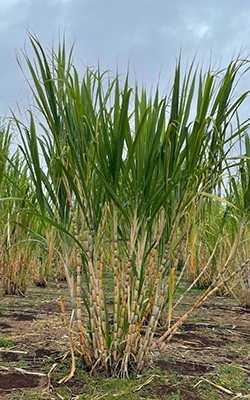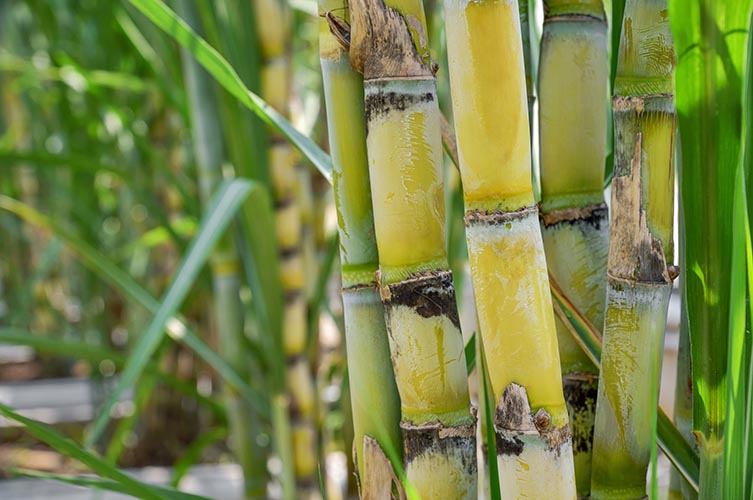What Are Sugar Canes Used For Besides Sugar? Discover the Hidden Uses
All Regarding Sugar Canes: What Are Sugar Canes Utilized For and Their Duty in Global Farming?
Sugar canes act as a keystone of international farming, primarily identified for their role in sugar manufacturing. They also contribute to the production of by-products like molasses and ethanol. These elements not just support different industries yet additionally effect economic stability in country areas. Nonetheless, the farming of sugar canes deals with significant environmental obstacles. Understanding their complex role triggers further expedition into their farming practices and sustainability efforts.
The Agricultural Refine of Sugar Walking Stick Farming
Although sugar walking cane growing may differ by area, the essential agricultural process remains regular. The first step includes choosing high-yielding ranges appropriate for local environments. Preparation of the dirt is important, commonly needing tillage and the addition of fertilizers to boost fertility. Growing usually occurs during the rainy season, with farmers utilizing either entire stalks or cuttings to develop new crops.As the plants grow, they need thorough treatment, consisting of weed control, insect monitoring, and watering, depending on the ecological problems. Farmers keep an eye on the sugar walking stick's growth cycle, which generally covers 10 to 24 months, before harvesting. Gathering is labor-intensive, typically performed by hand or with specialized machinery, ensuring minimal damages to the stalks. Adhering to harvest, the walking stick is delivered to processing centers. This careful growing procedure not just sustains local economic climates however likewise plays a substantial function in international farming methods, contributing to food and power supplies.
Sugar Manufacturing: From Walking Cane to Crystal
The journey of sugar manufacturing begins the minute freshly collected sugar cane comes to processing facilities. The first step entails washing and slicing the walking cane to prepare it for removal. Using high-pressure rollers, the juice is drawn out from the smashed walking cane, leading to a pleasant fluid called sugarcane juice. This juice goes through explanation, where contaminations are eliminated with the addition of lime and heat.Next, the clarified juice is concentrated by steaming it to develop a thick syrup. This syrup is after that crystallized by cooling down, enabling sugar crystals to develop. The crystallized sugar is divided from the remaining syrup, called molasses, with centrifugation.Finally, the sugar crystals are cleaned and dried, leading to the acquainted granulated sugar (What Are Sugar Canes Used For). This process transforms raw sugar cane into an item that is important to various culinary and commercial applications, highlighting the importance of sugar in worldwide agriculture
Biofuels and Sugar Canes: A Sustainable Future
As the world significantly looks for sustainable power services, sugar walking sticks have arised as an appealing resource for biofuels. The biomass originated from sugar walking sticks can be exchanged ethanol, an eco-friendly gas choice that markedly decreases greenhouse gas exhausts contrasted to nonrenewable fuel sources. This process not only gives a cleaner power resource but likewise advertises energy independence for lots of countries.In enhancement, sugar cane farming supports country economic situations by developing jobs in both farming and biofuel production fields. Making use of sugar walking canes for biofuel production also encourages farming diversity, which can boost soil wellness and lower reliance on solitary plants. The byproducts of sugar walking cane handling can be made use of for power generation, furthermore contributing to a sustainable power cycle. As nations endeavor to satisfy eco-friendly power targets, sugar walking sticks are positioned to play an important role in forming a more sustainable future in the biofuel landscape.
The Role of Sugar Canes in Beverage Manufacturing
Sugar canes play a significant role in beverage manufacturing, acting as a primary active ingredient in rum and adding to the sweetness of many sodas. In addition, their natural juices are utilized in different drinks, boosting taste and allure. This versatility emphasizes the significance of sugar walking canes in the worldwide beverage industry.
Sugar Cane in Rum
Rum production is delicately connected to the cultivation of sugar cane, a necessary plant that provides the required fermentable sugars required for fermentation. This process starts with the extraction of juice from harvested sugar canes, which is then either fermented straight or processed right into molasses. Yeast is added to transform the sugars into alcohol, causing a diverse array of rum styles, from light to dark ranges. The geographical region where the sugar walking stick is expanded greatly influences the flavor account of the rum, with elements such as soil kind and environment playing critical duties. Countries like Barbados, Jamaica, and Cuba are renowned for their rum production, mirroring the social and historical value of sugar walking stick within the international drink sector.
Soft Drinks Sweetener Resource

Natural Juice Manufacturing Utilizes
In enhancement to its considerable duty in soda manufacturing, sugar walking cane is likewise critical in the natural juice industry. The juice drawn out from sugar walking stick, called walking stick juice, is celebrated for its natural sweetness and one-of-a-kind flavor account. This juice is commonly eaten fresh in various areas, especially in exotic nations, where it is enjoyed as a renewing beverage. Furthermore, walking stick juice offers as a base ingredient in moved here a series of natural fruit juices and smoothie mixes, enhancing both preference and nutritional value. Its natural homes make it an eye-catching alternative to sweetening agents, attracting health-conscious consumers. On the whole, sugar walking cane's convenience in juice production emphasizes its relevance in contemporary beverage offerings worldwide.
Advancements in Sugar Walking Cane Byproducts
Innovations in sugar walking stick by-products are paving the means for sustainable services in various read review sectors. Biofuels originated from sugar walking cane use an alternative power resource, while innovations in sustainable product packaging are decreasing dependence on typical materials. These growths highlight the flexibility and potential of sugar cane beyond its key use in beverage manufacturing.
Biofuels From Sugar Walking Cane
Exactly how can the results of sugar walking cane contribute to lasting energy remedies? The conversion of sugar walking stick right into biofuels presents an encouraging avenue for renewable resource. By making use of the coarse deposit, recognized as bagasse, producers can generate bioethanol with fermentation processes. This bioethanol can act as a lasting choice to fossil fuels, minimizing greenhouse gas discharges and dependence on non-renewable sources. Furthermore, molasses, another result, can be fermented to create biofuels, optimizing resource efficiency. The power produced from sugar walking stick not only offers a cleaner fuel source but additionally enhances the overall financial feasibility of sugar manufacturing. By integrating biofuel manufacturing right into their operations, sugar cane sectors can play a crucial function in progressing sustainable power options worldwide.
Sustainable Product Packaging Solutions
Sustainable packaging services are increasingly being created from sugar cane byproducts, showcasing the adaptability of this agricultural staple. Advancements such as eco-friendly plastics stemmed from bagasse, the coarse residue left after juice removal, are obtaining traction. These materials offer an environment-friendly option to typical plastics, reducing dependence on fossil gas and lowering carbon impacts. In addition, sugar cane-based product packaging is compostable, breaking down normally without harming the environment. Firms are currently checking out these choices to straighten with consumer demand for sustainability. As understanding of plastic contamination expands, the fostering of sugar cane-derived product packaging is anticipated to increase, placing sugar walking sticks as a key player in the shift to greener packaging services in various markets.
Economic Impact of Sugar Walking Stick Farming

Sugar walking cane farming has deep roots in many economic situations, its financial impact extends far past agricultural production. This plant offers as a considerable resource of earnings for millions of farmers worldwide, particularly in developing countries where agriculture is click now a main resources. Sugar cane adds to regional economic climates with job creation in farming, handling, and harvesting. The market also promotes growth in associated industries such as transportation, tools production, and food processing.Furthermore, sugar walking cane is a principal in international trade, affecting global markets and rates. Nations that produce sugar cane commonly rely upon exports to enhance their financial stability. The byproducts of sugar walking stick, such as ethanol and molasses, branch out profits streams for farmers and include worth to the farming sector. Generally, the financial implications of sugar walking cane farming are profound, affecting not only farmers but also whole areas and national economic situations.
Ecological Considerations in Sugar Walking Cane Farming
While sugar walking stick farming plays a vital role in lots of economic situations, it also elevates significant environmental worries that can not be forgotten. The considerable use fertilizers and chemicals in sugar cane farming usually leads to dirt deterioration and water contamination. Runoff from these chemicals can contaminate close-by water bodies, damaging marine ecosystems. In addition, the monoculture practices widespread in sugar walking stick farming decrease biodiversity, making ecological communities a lot more vulnerable to parasites and diseases.Deforestation is another crucial concern, as land is typically gotten rid of to make method for sugar haciendas, causing environment loss for wildlife and raised carbon exhausts. The high water consumption needed for sugar walking stick irrigation can strain neighborhood water resources, especially in arid regions. As international need for sugar continues to rise, resolving these ecological obstacles ends up being necessary to guarantee lasting practices in sugar cane cultivation.
Regularly Asked Inquiries
What Are the Nutritional Benefits of Sugar Walking Cane?
The dietary advantages of sugar walking stick primarily include its high carb content, giving energy. In addition, it includes vitamins, minerals, and anti-oxidants that might sustain total wellness, though small amounts is vital due to its sugar content.
Just How Does Sugar Walking Stick Affect Local Ecosystems?
Sugar walking stick cultivation can greatly influence neighborhood environments by altering land usage, influencing biodiversity, and needing considerable water sources. Furthermore, it might lead to dirt degradation and pesticide runoff, interrupting surrounding habitats and wildlife populations.
What Is the History of Sugar Walking Cane Cultivation?

Exist Alternatives to Sugar Walking Stick for Sugar Production?
Alternatives to sugar walking stick for sugar manufacturing consist of sugar beets, corn, and various exotic plants like sorghum and agave (What Are Sugar Canes Used For). These crops use diverse sources of sweet taste, each with distinct farming needs and environmental effects
Exactly How Do Weather Patterns Influence Sugar Walking Cane Yields?
Climate patterns significantly influence sugar cane yields with temperature level variations, rains amounts, and seasonal cycles. Drought or excessive rains can impede growth, while ideal problems enhance photosynthesis, eventually affecting the amount and top quality of the harvest. The trip of sugar production starts the moment fresh collected sugar walking stick gets here at refining facilities. The taken shape sugar is separated from the staying syrup, known as molasses, through centrifugation.Finally, the sugar crystals are cleaned and dried, resulting in the acquainted granulated sugar. Rum production is intricately connected to the farming of sugar walking cane, a necessary crop that provides the essential fermentable sugars needed for fermentation. Additionally, the monoculture techniques common in sugar cane farming lower biodiversity, making ecological communities much more susceptible to bugs and diseases.Deforestation is another important problem, as land is often removed to make method for sugar vineyards, leading to habitat loss for wild animals and enhanced carbon emissions. Alternatives to sugar walking stick for sugar production include sugar beets, corn, and different exotic plants like sorghum and agave.